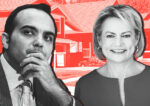Trending
NYC’s high-end co-ops, condos taxed well beneath market value, study finds

Some of New York City’s most valuable properties in high-cost neighborhoods are consistently undervalued and therefore under-taxed, according to a new report from NYU’s Furman Center for Real Estate and Urban Policy.
The report identified 50 individual co-op units that sold in 2012 for more than the New York City Department of Finance’s estimated market value for the entire co-op building.
The greatest concentration of such properties was found in Brooklyn and Manhattan, with more than 70 percent located on the Upper West Side, Upper East Side, Park Slope/Carroll Gardens and Fort Greene/Brooklyn Heights.
In one example, on the Upper East Side, a unit sold for $50 million in a building valued at $15.735 million.
Co-op buildings and condominiums are valued by the finance department just like rental properties — that is, according to the income they generate, under New York’s Real Property Tax Law. But this can lead to problematic comparisons because, for some buildings — particularly on the high end — there are simply no comparable properties. This is especially true if the comparison is against rent-controlled or regulated properties, where income generated is artificially limited.
Many rent-stabilized properties may be similar to a co-op in terms of size, location, number of units and age, but differ in other ways that render it less valuable.
In the meantime, tenants in large rental buildings, who often bring in less than half the income of the aforementioned co-op and condo owners in wealthy neighborhoods, are more likely to be black or Hispanic — and get slammed with disproportionately higher tax bills. With rent-stabilized buildings, taxes are passed on to renters via the Rent Guidelines Board, while tenants with market-rate properties get some of the taxes passed along as well.
The report suggests amending state law to authorize the department to use sales prices to estimate the value of co-op and condo buildings. — Julie Strickland




